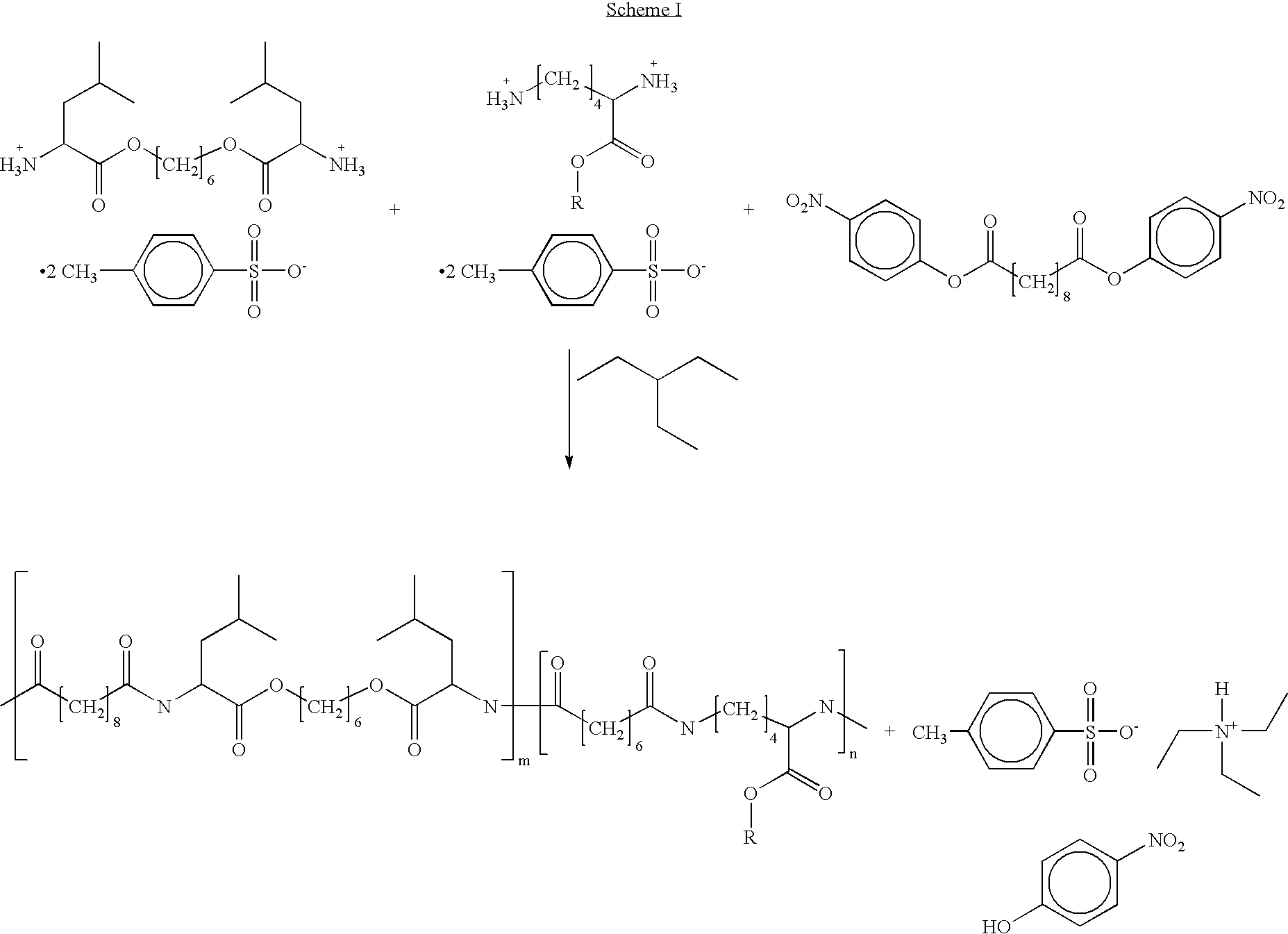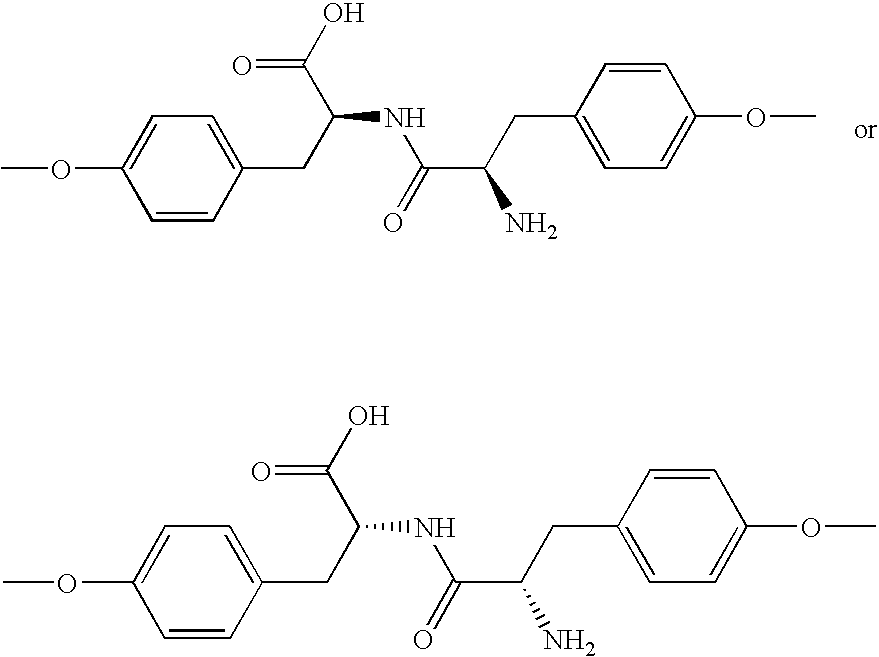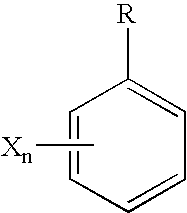Poly(ester amide) block copolymers
a technology of ester amide and copolymer, which is applied in the direction of prosthesis, bandages, blood vessels, etc., can solve the problems of intimal flaps or torn arterial linings, affecting the patient's health, and affecting the patient's life, so as to improve biological compatibility and mechanical properties.
- Summary
- Abstract
- Description
- Claims
- Application Information
AI Technical Summary
Benefits of technology
Problems solved by technology
Method used
Image
Examples
Embodiment Construction
Poly(Ester Amide) Block Copolymer
[0014]In one aspect of the present invention, provided herein is a copolymer that includes a soft block which can be a poly(ester amide) (PEA) block (A) and a hard block (B) derived from a biocompatible polymer. The copolymer can be any of AB, ABA, and BAB type block copolymer. By varying the relative amount of the soft block (e.g., a PEA block) and the hard block, one can obtain a copolymer with a glass transition temperature (Tg) for mechanical integrity in drug-delivery stent applications.
[0015]The terms “hard” and “soft” are relative terms and, as used herein, refer to mechanical strength and toughness of the block copolymer defined herein. The term “hard block” refers to the block that has a higher mechanical strength and toughness whereas the term “soft block” refers to the block that has a lower mechanical strength and toughness. Generally, the hard block in a block copolymer has a glass Tg higher than the Tg of the soft block. However, the ha...
PUM
| Property | Measurement | Unit |
|---|---|---|
| size | aaaaa | aaaaa |
| diameter | aaaaa | aaaaa |
| concentration | aaaaa | aaaaa |
Abstract
Description
Claims
Application Information
 Login to View More
Login to View More - R&D
- Intellectual Property
- Life Sciences
- Materials
- Tech Scout
- Unparalleled Data Quality
- Higher Quality Content
- 60% Fewer Hallucinations
Browse by: Latest US Patents, China's latest patents, Technical Efficacy Thesaurus, Application Domain, Technology Topic, Popular Technical Reports.
© 2025 PatSnap. All rights reserved.Legal|Privacy policy|Modern Slavery Act Transparency Statement|Sitemap|About US| Contact US: help@patsnap.com



